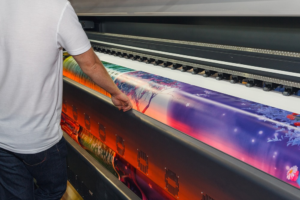Automated textile waste sorting is a promising technology that can significantly improve the recycling and reuse of textile materials. This process involves the use of cameras and sensors, often combined with machine learning and computer vision algorithms, to identify and separate various materials within textile waste.

Here’s how it generally works:
Material Identification: Cameras and sensors capture images and data of the textile waste as it moves along a conveyor belt or similar system. These sensors can identify various aspects of the materials, such as their type, color, and texture.
Machine Learning and Computer Vision: Machine learning algorithms and computer vision technology are used to analyze the data collected by the sensors. The algorithms are trained to recognize different textile materials based on their visual characteristics and properties. For instance, they can distinguish between cotton, polyester, wool, and other materials.
Sorting Mechanism: Once the system has identified the materials, it can activate a sorting mechanism. This can involve air jets, conveyor belts, robotic arms, or other mechanical devices to separate the materials based on their classification. For example, all cotton items could be directed to one area, while polyester garments go to another.
Quality Assessment: In addition to sorting by material type, the system can also assess the quality of the textiles. This assessment may involve checking for tears, stains, or other defects. High-quality items can be set aside for reuse, while lower-quality materials can be designated for recycling or downcycling.
Data Logging and Reporting: The system often includes data logging and reporting capabilities to track the amount and types of textiles processed. This information can be valuable for recycling facilities and manufacturers, helping them understand the composition of textile waste and plan their recycling and production processes accordingly.
The benefits of automated textile waste sorting are significant:
Efficiency: This technology can process large volumes of textile waste quickly and accurately, improving recycling and reuse rates.
Resource Conservation: By sorting and reusing materials efficiently, it helps conserve resources and reduces the environmental impact of textile production.
Cost Savings: Efficient sorting reduces labor costs and waste disposal expenses for textile recycling facilities.
Circular Economy: It contributes to the development of a circular economy by facilitating the recycling and reuse of textiles, reducing the need for raw materials.
Environmental Benefits: Reducing textile waste in landfills and incineration sites helps mitigate the environmental impact of the fashion industry.
As technology advances and becomes more widely adopted, automated textile waste sorting is expected to play a crucial role in making the fashion industry more sustainable and eco-friendly.
Further, taking automated sorting to another level Spectroscopy is emerging as a powerful technology that goes a step beyond artificial vision (computer vision) by using near-infrared (NIR) waves to identify materials or mixtures of materials based on their unique spectral signatures. Spectroscopy has been widely used for various applications, including the separation and identification of materials, and it has found more recent applications in textiles.
How Spectroscopy Works
Spectroscopy involves shining a light source (usually NIR light) onto a sample and measuring the light that is absorbed, transmitted, or scattered by the sample. The resulting spectrum provides information about the chemical composition, molecular structure, and other material properties. Each material has a distinct NIR spectral fingerprint, which allows for accurate material identification and classification.
So, technology is indeed becoming increasingly important in the textile industry, helping manufacturers, recyclers, and quality control experts achieve higher levels of efficiency, sustainability, and product quality.


